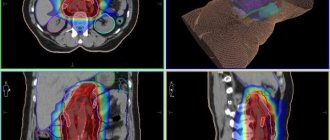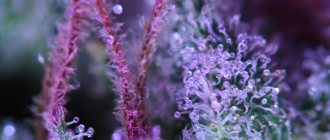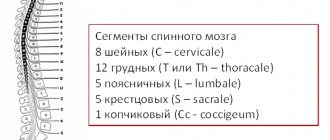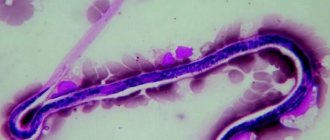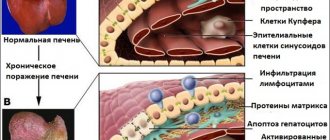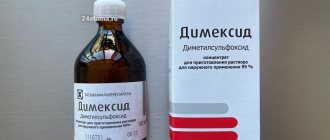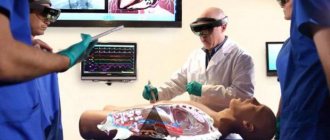Lymph is the living water of our body. The lymphatic system permeates a person completely and is responsible for one of the most important functions - cleansing and immunity. Without lymph, the body would turn into a fetid swamp. But, despite the fact that for the most part she copes well with her responsibilities herself, sometimes she still needs help. Because modern realities are such that the amount of rubbish entering the body significantly prevails over the cleansing capabilities of lymph.
The structure of the human lymphatic system
Since the lymphatic system is part of the vascular system, its structure is very similar. It consists of capillaries, nodes, vessels, trunks, ducts and intercellular fluid, which removes all dirt from the body.
Trunks, vessels and capillaries are a lymph network. It is a plexus of tubes that permeate almost the entire body. It is along them that the very living water moves.
Nodes are formations that are the primary filter. They cleanse the body of dangerous pathogens - a kind of sump.
Ducts are places where the lymph system connects to the circulatory system.
Lymph is a liquid that constantly moves through the trunks, vessels and capillaries.
Diagram of the lymphatic system: what does the human lymphatic system consist of?
The lymphatic system is a global cleansing structure that removes poisons and pathogens from all tissues and organs of the body.
Ignorance of the principles of its work in everyday life leads to serious consequences for health: going to baths and saunas at the wrong time for the lymphatic system, incorrect massage techniques, and incorrect drinking balance.
In clinical practice, an approach to therapy without taking into account the state of the lymphatic system leads to incorrect prescriptions and damage to the patient’s health, in particular, disruption of the microbiota as a result of improper withdrawal from antibiotic therapy.
To prevent this from happening, it is extremely important to understand how the lymph system works. Therefore, first we will talk about the structure of the lymphatic system and where it originates.
Globally, the lymphatic system consists of lymph itself and two sections:
- transport - including lymphatic capillaries, postcapillaries, vessels, trunks and ducts; ensures the movement of lymph;
- lymphoid organs - including lymph nodes, spleen, thymus, tonsils and red bone marrow; provide filtration of lymph, study of pathogens and production of blood and immune system cells.
Lymph flow begins in the intercellular space, from where lymph is collected by microscopic vessels ( capillaries ) consisting of a thin layer of endothelial cells. Lymphatic capillaries have no valves. It moves along them from the bottom up due to the contractile movements of the microfilaments of the cells surrounding the vessels.
Then the lymph enters the postcapillaries - vessels with a double layer of endothelium and valves that promote the movement of lymph. Their functional unit is called lymphangion - a segment from one valve to another. Thanks to these valves and the contractile activity of the lymphangions, further upward flow of lymph is ensured.
In total, there are about 500 lymph vessels in the body. They are divided into:
- collecting,
- diverting,
- main lines.
Collecting vessels are a capillary network that draws lymph from the extracellular matrix. The drainage vessels are larger and carry lymph from the organs to the lymph nodes.
Collecting and discharging lymph vessels follow the blood vessels, often along the veins. The main vessels are part of the neurovascular bundles and are located inside the common fascial sheath.
After passing through the lymph nodes, the lymph enters the lymphatic lines (or trunks), which drain lymph from the head, upper and lower extremities, chest and abdominal cavity.
On the thoracic duct is located one of the most important lymph collectors in the body - cisterna chyli or milk cistern. From it, as well as through other, smaller lymphatic ducts, lymph centrally enters the venous bloodstream, and the blood is sent to the liver for purification.
So lymph - “the living water of the human body” - goes through a full cycle and, in fact, washes our body from bottom to top. The exception is the head: here the lymph flows from top to bottom, and in addition, the brain does not have its own lymph nodes, it uses “neighboring” ones - the cervical and submandibular ones.
When working properly, such a “ filter ” is able to resist any infections that try to attack our body. But if everything were that simple, you and I wouldn’t get sick. Let's figure out how the lymphatic system works and what we should never do if we want to keep it healthy.
Organs of the human lymphatic system
The main organs of the lymphatic system are the bone marrow and thymus. Secondary - spleen, tonsils, appendix, Peyer's patches, lymph nodes. The main function of these organs is the formation of immune cells in the body.
The spleen monitors the condition of the blood, removes all dead cells and antigens (compounds dangerous to the body) from it.
Secondary organs are connected to other tissues and lymphocytes (such cells) move between them. They pass from the blood to the lymph nodes, spleen and other tissues, and then return back to the blood through the tubes of the lymphatic system. Lymphocytes are formed in the bone marrow, and are also divided in the thymus.
What diseases can provoke pathology?
Pathological inflammatory enlargement of the lymph nodes in the groin - regional or inguinal lymphadenitis - indicates a progressive disease of the organs from which lymph collects in the nodes, causing their enlargement.
- The lower lymph nodes collect material from the lower extremities.
- The upper lymph nodes in the groin are responsible for “cleanliness” in the area of the side of the torso, lower abdomen, and buttocks.
- The middle lymph nodes collect lymph from the duodenum and anus.
An increase in the “bag” in the groin indicates either an inflammatory process in the organs being served, or an infection in adjacent areas.
In most cases, the cause of enlarged inguinal lymph nodes is:
- bacterial / viral infection of the reproductive organs (syphilis, infectious granuloma, chancroid, gonorrhea, herpes in the groin, toxoplasmosis, tuberculosis, furunculosis);
- physical overload, swelling of the legs;
- in 92% of cases, enlargement of the groin lymph nodes accompanies injury to the genitals and perineum;
- neoplasms (including malignant ones - lymphosarcoma or lymphoma) also lead to inflammation of the lymph nodes in the groin area.
In the practice of diagnosing lymphadenitis, approximately a third of cases occur due to drug withdrawal reactions. Enlarged lymph nodes can be caused by the introduction/withdrawal of steroids and the end of the chemotherapy program.
Composition of lymph
Lymph is very rich in composition. It contains:
- a huge number of lymphocytes;
- red blood cells, which in normal times are not contained in very large quantities, but during injuries they multiply rapidly. If you look at your wound, which begins to slowly heal, you will see a thin film - it appeared thanks to this reproduction;
- granulocytes - activated during infectious infections;
- proteins, lipids, amino acids, glycerin, glucose, electrolytes and other compounds - their quantity depends on how much water you drink. For lymph to work properly, the body needs a normal and regular supply of moisture;
- Lipoproteins - in common parlance these are cholesterol and phospholipids. Their quantity depends on nutrition. The better you eat, the fewer of them there are.
How does the human lymphatic system work?
Every day, through air and food, “enemies” enter our body - toxic substances, bacteria, viruses and infections. In addition, cells are constantly renewed. And so that all this unpleasant bouquet does not accumulate inside, there is a lymphatic system that removes everything. But cleansing is not the only function of the lymphatic system.
It also helps protect the body by producing immune cells, which determine how a particular virus will affect us and how long we will be sick if damage to our health is caused.
Humoral function once again proves that our body works as a coherent integral mechanism, where one thing depends on the other. It is responsible for transmitting impulses that tell what substances need to be synthesized for proper functioning.
The lymphatic system also transports nutrients. Delivery of lipids and albumin molecules into the blood. On average, every day about 100 grams of protein enters the blood from lymph, without which the body cannot function normally.
Excess fluid is removed from the body with lymph. This function is called drainage and, if it is disrupted, swelling may appear, sometimes so severe that it interferes with movement.
Human lymphatic system: pattern of lymph movement
Lymph flow is strictly coordinated by the anatomy of the human lymphatic system: even a slight change in this case can lead to irreversible consequences. Normally, lymph flows along the channel from bottom to top, that is, from the smallest capillaries to large ducts, and only in this direction; the reverse flow of lymph is a serious pathology and is normally impossible in principle.
Lymphatic capillaries are the smallest units of the lymphatic system; they begin the lymph flow cycle. On the one hand, they have a closed end, on the other, they flow into larger capillaries and vessels of the lymphatic bed. The capillary walls have a very thin, almost transparent structure, due to which liquid and larger protein molecules seep inside freely, which distinguishes them from blood capillaries, which do not have such a high throughput.
Lymphatic vessels are larger tubes through which lymph moves from the capillaries to the trunks. Their structure is somewhat reminiscent of the veins of the circulatory system, however, as in the case of capillaries, the walls of the lymph vessels are thinner. In addition, inside these vessels there are a large number of tightly closed valves that prevent the flow of lymph in the opposite direction.
On the way from the capillaries to the trunks, lymph enters the lymph nodes located along the vessels. Such formations are divided into groups depending on location. As a rule, each lymph node looks like a small spherical or oval formation about 2 cm in diameter, into which several vessels flow, and only 1-2 exit. This is where the main filtration of lymph occurs - foreign bodies are separated and lymphocytes are produced when pathogens are detected.
Departing from the lymph nodes, the efferent vessels gradually flow into 2 key trunks of the lymphatic system, resulting in the formation of the same number of ducts - the thoracic and the right:
- The thoracic lymph duct begins in the capillaries of the left arm, the left side of the head and internal organs located below the costal line. Its terminal point is the left subclavian vein.
- The right lymphatic duct, accordingly, starts from the right arm, the right half of the head and chest and flows into the right subclavian vein.
In the circulatory system and liver cells, immune processes that began in the lymph nodes are completed, as a result of which the main pathogens are neutralized, and toxins and poisons are eliminated from the body. In addition to the immune reaction, in this way most of the fluid is transferred from tissue cells and interstitial space into the bloodstream. The driving force of lymph flow directly depends on the physiology and anatomy of the human lymphatic system:
- The different diameters of the tubes of the lymphatic system, from the smallest capillaries to large ducts, provide a noticeable difference in hydrostatic pressure, which lifts the lymph: if at the initial stage of the channel the pressure is from 2 to 5 mm Hg. Art., then closer to the ducts this figure gradually approaches zero.
- The vascular walls of the human lymphatic system include smooth muscle cells capable of alternate contraction and relaxation. Thanks to this, lymph can move towards the duct.
- Contraction of the muscle fibers surrounding the lymphatic vessels periodically increases the pressure within the lymphatic system, causing the fluid to flow faster.
Any malfunction, blockage or other disturbance leads not only to the development of a disease against the background of reduced immunity, but also to tissue swelling up to the formation of a non-malignant tumor.
Lymph cleansing points
Cleansing usually occurs through the excretory and digestive systems. But sometimes they fail and the body begins to use other organs.
Vagina in women and urethra in men
Some dangerous microorganism entered the body, the lymphatic system quickly dealt with it and begins to get rid of the “corpses” of these bacteria. In women, this is usually accompanied by copious vaginal discharge (in severe cases, itching may occur); in men, the discharge is accompanied by pain when urinating.
What do people usually do in this case? Without dealing with the problem, they swallow pills. But this does not help solve the root cause, but only removes the effect. The tablets extinguish the body’s ability to cleanse itself, but it does not save you from dangerous microorganisms - they hide in other organs and cause harm there. In addition, the pills have a strong effect on the liver and ultimately only harm us.
It is necessary to fight not with the discharge, but with what caused it.
Gastrointestinal tract
The gastrointestinal tract is penetrated by many lymph nodes, so it is also involved in cleansing. The intestines not only release leftover food, but also poison that somehow got inside us.
Various disorders, pain, flatulence are the result of the fight between the lymphatic system and bacteria. If all this bothers you quite often, take care of your immunity urgently!
Sweat glands
Various poisons, toxins and hormones are released through sweat. And the main concentration of this power is the armpits. And instead of letting them work normally, we use deodorants. As a result, not finding a way out, the lymph drives all the dirt further and ends up in the chest. And this is where mastopathy occurs.
If you absolutely cannot do without deodorant (this is logical, no one wants to smell bad), then at least stop using them 24/7. And replace it with organic options. For example, mineral deodorant from Beauty 365. It does not block the work of the sweat glands, but gently regulates it.
If possible, shower and wash off cosmetics more often. You should sweat - it's normal!
Nose
The nose is one of the main filters. It cleans the inhaled air from dust and bacteria. Excessive mucus production may not be a symptom of a cold, but only a protective reaction of the body. In this case, you should not treat the snot, but you need to find out the reason why it appeared.
Tonsils
Previously, tonsils (and adenoids too) were considered unnecessary organs and doctors calmly cut them out. But it's not right! They are an important part of the lymphatic system. This is where the fight between viruses and lymphocytes occurs, and immune cells are released.
If the functioning of the tonsils is disrupted, then the person is constantly sick, and the tonsils become inflamed. We start treating them with antibiotics, but they either fail or their effect wears off quickly. As a result, they are removed, but the problem does not go away. Viruses go further, capturing the trachea, larynx, bronchi and lungs. Before removing inflamed tonsils or adenoids, try to cleanse the lymphatic system. This should help.
Airways
When the mucous membranes of the nasal cavity are unable to cope with the infection, it can pass on. Laryngitis occurs in the larynx. If it was not possible to cope with the virus there, then it goes further and can cause tracheitis, bronchitis and, at the end of its journey, even pneumonia.
How to preserve the lymphatic system: prevention of pathologies
If the lymphatic system is overloaded or clogged, then health problems are sure to appear. Try to minimize negative influence from the outside - don’t miss anything that can cause harm. At a minimum, you can start with proper nutrition. Be sure to include foods that stimulate intestinal function in your diet.
Lymphatic drainage massage is a wonderful technique that allows you to disperse stagnant fluid, which means it improves the removal of toxins.
Special exercises and breathing exercises also help cleanse the lymph nodes and ducts.
A sedentary lifestyle harms all organs, but the lymph suffers first. Have you been sitting at work for a long time? Get up and walk around the office, do some light exercises. Try to walk outdoors every day.
Lymph nodes are very sensitive to temperature changes. Avoid hypothermia or overheating - they can lead to inflammation.
And, of course, avoid stress! Depressive states cause the release of a hormone that slows down all processes and leads to spasms. Sleep at least 7-8 hours, meditate, take vitamins and smile more often.
Inner Britain: what should healthy lymph flow look like?
The lymphatic system does not have a heart. The movement of lymph is created not by a powerful pump, but by a thin, delicate, vulnerable valve system. Its work depends on the fluidity of lymph, vascular tone, tissue turgor, blood pressure, temperature, degree of dehydration... And our health and well-being also largely depend on the lymph itself. Let's figure out what lymph likes, what it doesn't like, how it moves and how we can take care of it.
Lymph is a clear or slightly yellowish liquid substance with a slightly alkaline reaction. It includes:
- lymphocytes,
- single red blood cells,
- protein compounds,
- lipids,
- glucose,
- cholesterol,
- phospholipids,
- and also fat-soluble toxins, cellular breakdown products and pathogens that the lymph has removed from the tissues.
All this is contained in the lymph in one concentration or another, but the main carrier component is the universal natural solvent - water. Water balance for lymph is extremely important, because its volume in the human body is 5 times greater than the volume of blood.
If there is not enough water, the concentration of protein compounds in the lymph increases. Normally, the speed of lymph flow is 0.5-0.8 cm/sec, but if the lymph becomes thicker, it flows slower, and this threatens stagnation.
One of the signs of an existing lymph flow disorder is cellulite . The loose, uneven structure of subcutaneous fat tissue indicates not so much the deposition of fat, but rather the fact that the lymph cannot cope with the removal of toxins and “hides” them in fats, where they can be stored for years. And with sudden weight loss, it comes out, enters the bloodstream and causes disease.
Also, a problem with the lymphatic system is indicated by swelling and depressed red stripes from the bed in the morning. When the body has enough fluid, the turgor (elasticity) of the tissues is normal, and the excretory systems (in particular, the kidneys) are in order, such symptoms are absent.
What slows down lymph?
- Drinking alcohol, coffee, soda
- Smoking
- Unhealthy and difficult to digest food
- Lack of clean water
- Excess salt and sugar in the diet
- Wearing tight, tight clothing or high-heeled shoes
- Taking medications
- Physical inactivity
What speeds up lymph?
- Drinking clean water
- Normalization of diet
- Rejection of bad habits
- Lymphatic drainage massages
- Exercises for the lymphatic system
- Competent herbal medicine
The movement of lymph should not be too slow, but it should not be too fast either. Lymph needs time to wash every cell. She is not a sprinter, but a tireless slow mover who slowly collects garbage and carries it away so that the tissues can function safely.
useful for the lymphatic system to carry out unloading from time to time first of all, food. During these periods, you should give up complex culinary delights to help yourself.
An important note for those who are looking for a way to effectively cleanse the lymphatic system. The lymphatic system is itself a means of cleansing. It does not need total cleansing, and it is impossible to free it 100% of toxins, because a number of toxins are produced and released by our own cells. Naturally.
But mild detoxifications are acceptable and beneficial. Those who want to do this competently are recommended to take a short series of “Dietetics Light” lessons from immunodietologist™, nutritionist with 30 years of experience, Marina Nikolaevna Vnukova. This will help you prepare properly, personalize your cleansing regimen, and avoid worsening your condition due to improper, abrupt detoxification of the body.
Lymph formation: what is it and how does it happen?
Oxygen and other nutrients are supplied to tissues and organs through the blood. But they need to be cleansed so as not to clog the body. So, through the walls of the capillaries, filtration occurs into the intercellular space, where a special tissue fluid is formed. But it not only cleanses the blood, but also additionally nourishes it with necessary elements.
This fluid then enters the lymphatic vessels, where it is saturated with lymphocytes and turns into lymph. All lymph moves in one direction - towards the heart.
Just about the complex: why do we need the lymphatic system?
Much that seems self-evident today was not always so. The gradual accumulation of knowledge in any field was sometimes the result of specially planned, thoughtful experiments, and sometimes simply chance or human observation.
How did you search for the “milky way”? History of the discovery of the lymphatic system
People have long known about the presence of blood vessels in animals. Despite the fact that the first harmonious and consistent explanation of the circulatory system was made only in the 17th century, some idea of its role appeared among humanity long before that.
William Harvey vs. Claudius Galen: how was the human circulatory system discovered? Find out here
At the same time, there were also plenty of mysteries. The ancient Greek physician Erasistratus, who lived in the 3rd century BC, noticed that in goats that were sacrificed, it was not blood flowing from some vessels, but a whitish liquid reminiscent of milk.
At first these white vessels were called “milky ways”. The largest of them is the so-called thoracic lymphatic duct. Around the middle of the 16th century, the Italian anatomist Bartolomeo Eustachius first identified this duct on the corpse of a horse. Apparently, the scientist himself did not realize the significance of his discovery, giving this structure the name “white thoracic vein.” Smaller lymphatic vessels and capillaries are transparent, so they are difficult to see during a routine anatomical examination.
Later, another researcher, Gaspare Azelli, establishes that the contents of vessels then still incomprehensible to science are formed in the intestines; lymph accumulates in the lymph nodes of the mesentery and moves through the vessels to the liver, i.e. represents "white blood". As might be expected, this discovery was met with disbelief. Even Harvey himself likened lymphatic vessels to veins.
With the invention of the microscope, the situation in morphological studies changed dramatically. In the 40s of the 18th century, German anatomist Johann Lieberkühn discovered the initial sections of the lymphatic channel - capillaries - in the intestinal villi.
What is known about this once mysterious part of the body today?
Lymphatic system in questions and answers
What is the lymphatic system?
In the process of blood circulation, arterial blood, passing through tissues and organs, delivers oxygen and nutrients to them. In turn, they “give” various metabolic products into the blood, which, already in the venous blood, go towards the heart.
Along with the blood vessels themselves, the so-called lymphatic system is found in various parts of the body (with some exceptions). It is part of the vascular system. It consists of lymphatic capillaries, small and large lymphatic vessels, as well as lymph nodes (lymph nodes) located along their course.
Lymph formation: what is it and how does it happen?
Various substances brought by arterial blood must reach their “targets” - tissues and organs. Here, among other things, fluid is filtered through the capillary wall into the intercellular space and tissue fluid is formed. Cells receive nutrients from it and excrete waste products here.
Next, the tissue fluid enters the lymphatic vessels, nodes, is enriched with lymphocytes and turns into lymph. Lymph is also the name given to the fluid circulating in the lymphatic system.
Lymph moves through lymphatic vessels in one direction - from the periphery to the center. In this it is helped by contractions of the muscles between which the lymphatic vessels lie, as well as the valves present in the lumen of the vessels.
Why do we need lymph nodes? What happens if the lymphatic system fails?
Are your tonsils inflamed? Did a splinter in your finger cause suppuration? What do lymph nodes have to do with this?
As it turned out, the most direct thing is related to the functions of the lymphatic system.
When pathogenic microorganisms (bacteria, viruses) penetrate into one place or another in the human body, after some time they themselves and parts of the cells destroyed by them enter the lymph nodes through the lymphatic vessels.
Here they are neutralized by special cells - macrophages, which capture and “digest” them.
In addition, cells of the immune system - lymphocytes and plasma cells - are formed in the lymph nodes, and antibodies are synthesized.
Thus, lymph nodes are a kind of “filter” on the path of various potentially dangerous microorganisms and substances. The lymph purified in this way, moving through all the larger lymphatic vessels, ultimately enters the venous system, i.e. into the blood.
It is easy to imagine that if the filtering, neutralizing function of the lymphatic system “breaks down,” the entire mass of harmful substances and pathogens will directly enter the blood and spread unhindered throughout the body.
How to cleanse the lymphatic system? Truth and fiction
Methods for cleansing the lymphatic system exist. These include, in particular, lymphpheresis and lymphosorption.
During lymphpheresis, a certain amount of lymph is removed from the body, followed by replenishment of lost fluid.
The resulting lymph can also be passed through special filters that retain toxic substances, after which it is returned back to the body through intravenous infusion. Components that are useful and necessary for the body, “retained” by filters, are also introduced.
These methods are used, in particular, in toxicology when there is an increased content of toxic substances in the body - both those formed during pathological processes in the body itself and those coming from outside.
Important:
To carry out such cleaning, surgery is performed to access the thoracic lymphatic duct located in the chest cavity and insert a catheter into it.
The method is used only as an auxiliary method in addition to other methods of removing toxins.
The methods of cleansing the lymphatic system using folk remedies available in open information sources are not commented on by official medicine.
Quite often, recipes for this purpose mention licorice root. In particular, it has been shown that licorice is generally not recommended for use by people with high blood pressure.
For what reasons does blood pressure increase? Therapist, cardiologist at Clinic Expert Voronezh, Kalinina Angelina Anatolyevna, tells
What to do if the lymph nodes are swollen?
There is only one answer: see a doctor immediately. You should not waste time thinking about possible “contamination” of the lymphatic system/nodes, ways to “clean” them, etc.
Diseases of the lymphatic system
Conventionally, several groups of diseases of the lymphatic system are distinguished.
Injuries. Like other organs and tissues, the lymphatic system can be injured during accidents, accidents, surgeries and other similar situations.
Developmental defects. They include insufficient development of lymphatic vessels and nodes (hypoplasia), congenital dilatation of lymphatic vessels (lymphangiectasia; also acquired), primary obliterating lymphangiopathy, lymphangiomatosis, etc.
Inflammatory diseases. These include lymphangitis (inflammation of the lymphatic vessel), regional lymphadenitis (inflammation of the lymph node/lymph nodes).
Tumors. Benign tumors of the lymphatic vessels are called lymphangiomas, and malignant tumors are called lymphangiosarcomas.
Tumors of the lymph nodes are usually malignant. These include both neoplasms emanating from the tissue of the lymph node itself, and metastases of tumors from other organs.
What symptoms should prompt you to see a doctor?
General: unusual, often unmotivated general weakness, malaise; spontaneous weight loss; loss of appetite; increase in body temperature, even to small numbers; sweating
Local - from the lymph nodes: increase in size; soreness; compaction; decreased mobility, “soldering” them together; changes in the skin over the “problem” lymph node.
What matters is the increase in volume of one or another limb, its swelling.
You should consult a doctor if there is even one manifestation - for example, with a painless enlargement of the lymph node.
Where to run?
Any symptoms from the lymphatic system require mandatory consultation with a medical specialist. What kind of doctor treats diseases of the lymphatic system?
Since it is initially unknown what the cause of changes in a person’s lymph nodes is, it is advisable to first contact a pediatrician or therapist (depending on the patient’s age).
You can make an appointment with a therapist here
Please note: consultations are not available in all cities
Since the diseases in which manifestations of the lymph nodes are detected are different in nature, additional studies may be prescribed, as well as consultations with related specialists. You may be referred to an infectious disease specialist, TB specialist, oncologist, hematologist, or surgeon.
To clarify the diagnosis, methods such as ultrasound, CT, MRI, etc. can be used; puncture, biopsy, and removal of a lymph node for subsequent microscopic examination; lymphography.
You might be interested in:
Is it possible to cleanse the liver?
Vegetarianism: pros and cons
Why do we need lymph nodes? What happens if the lymphatic system fails?
The tonsils became inflamed, the splinter caused suppuration of the finger - this is all the work of the lymphatic system. She is responsible for destroying and bringing out everything that can harm a person.
If the cleaning function fails, dirt may begin to come out through the skin. This is how various inflammations, acne, redness, and rashes form. In addition, there is additional pressure on the liver, intestines and kidneys. But that's not the worst thing.
With severe disorders, all toxins not only remain inside, but are carried through the blood throughout the body. And this is already fraught with serious consequences.
How to cleanse the lymphatic system? Truth and fiction
To get rid of excess liquid and remove all toxins, mechanical cleaning is necessary. Everything is safe and very easy. The best remedy is licorice. It must be taken together with enterosgel or activated carbon.
Licorice liquefies the lymph, which speeds up the removal of toxins. And activated carbon prevents them from being absorbed back into the cell.
In addition, licorice has a whole complex of essential oils and vitamins that provide an anti-inflammatory effect.
This cleaning is carried out over two weeks. And if you regularly do drainage massage and gymnastics, the effect will become most noticeable.
Lymphatic drainage massage
Drybrushing is a massage with a dry brush. It not only saves from cellulite, but also disperses lymph, removes swelling and improves blood circulation. Beauty 365 has a good brush.
Vacuum massage with miracle cans is also very good - swelling goes away, intercellular fluid accelerates and waste and toxins are eliminated faster. Choose what you like best.
Healthy foods for lymph
- Walnuts - thanks to phytoncide, protective properties increase.
- Carrots - beta-carotene, which is contained in huge quantities in this vegetable, slows down aging, helps produce antibodies and prevents lymphocytes from being destroyed.
- Sea kale - iodine also increases the protective properties of lymph.
- Eggs - they contain lutein, which is involved in the formation of building material for our cells.
- Fatty fish - the right fats make blood vessels healthy and elastic.
And now a little about those foods whose consumption should be limited:
- Alcohol causes vasospasm, and it disrupts the movement of fluid through the vessels.
- Salt – large amounts of salt cause hypertension.
- Canned food, sausages and other semi-finished products are food waste for humans. They cause clogging of our internal filters, which provokes the formation of stagnation and swelling.
